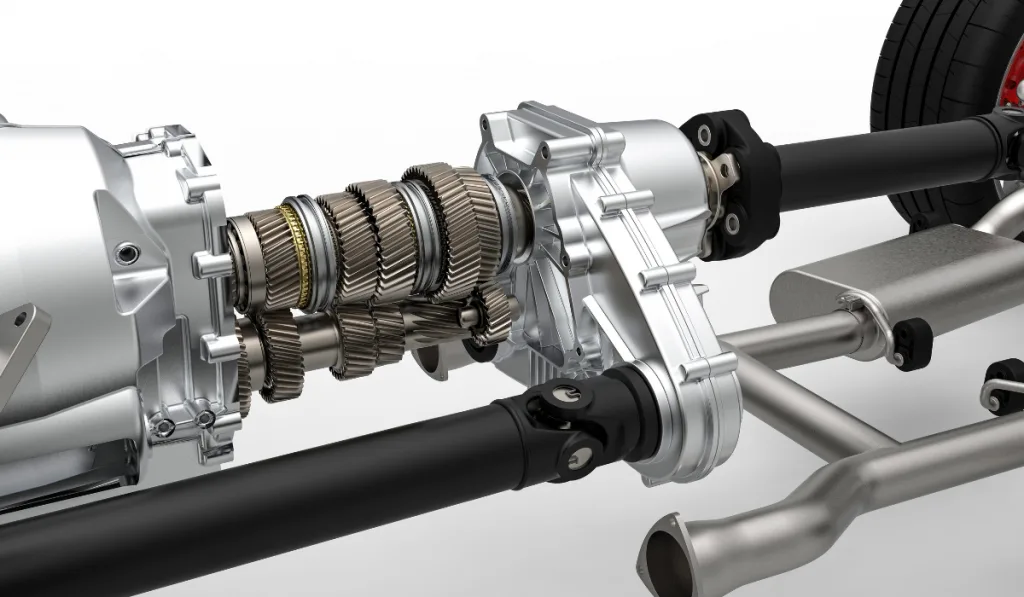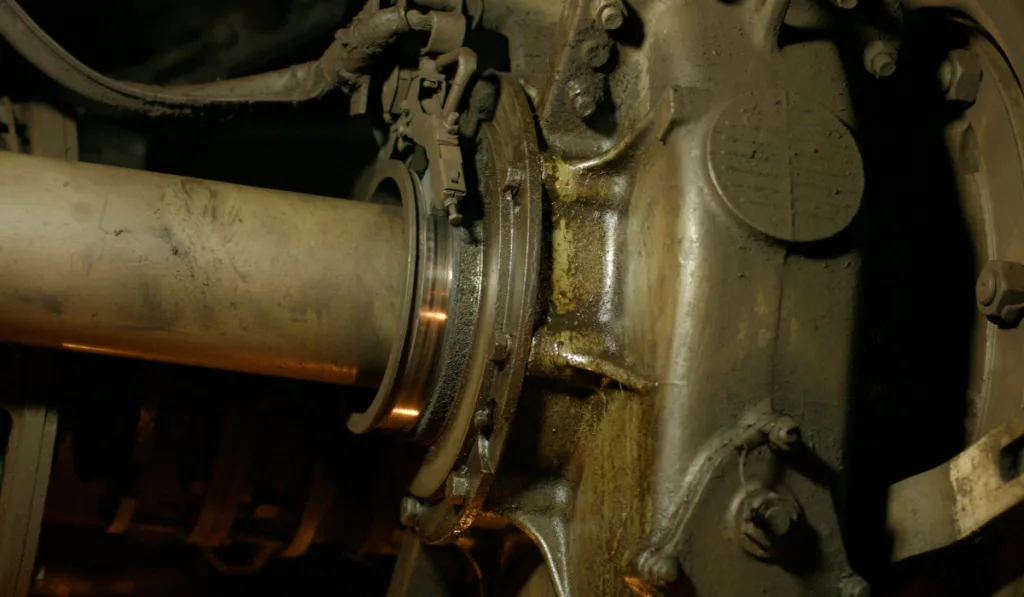Most trucks are rear-wheel drive, but some are not.
Why is that so, and why does it matter which drivetrain you pick for your truck? How efficient is a rear-wheel drivetrain compared to other drivetrains?
This article will give you a detailed look at the relevance of rear-wheel drive for trucks and everything related that you need to know.
Are All Trucks Rear-Wheel Drive?
Not all trucks are rear-wheel driven. Most trucks use the rear-wheel drivetrain, but recently, manufacturers have adopted other drivetrains like the FWD and the 4WD, especially for lighter trucks.
It is, therefore, crucial to understand the difference between the other drivetrains and the RWD for trucks and how they affect the truck’s handling.
What is a Drivetrain?
Before we get the specifics of rear-wheel drive (RWD), you should first know what a drivetrain is.
A drivetrain is a mechanism by which a vehicle transfers power from the engine to the wheels and which consists of parts like the driveshaft, gearbox, clutch, and differential.
This works because the resulting energy from the burnt fuel in the engine pushes the pistons, which spin the crankshaft.
The crankshaft’s rotary energy spins the driveshaft, which then goes to the differential, which is responsible for transmitting the energy from the driveshaft to the wheels for acceleration through the axles.
There are front-wheel drives (FWDs), rear-wheel drives (RWDs), all-wheel drives (AWDs), and four-wheel drives (4WDs).

What Is a Rear-Wheel Drive?
A rear-wheel drive is a drivetrain system where the rear wheels receive the engine power and are responsible for the acceleration, while the front wheels are responsible for steering.
Most RWDs are classified by an engine in front of the car and a driveshaft that runs across the belly of the vehicle to the rear wheels.
This drivetrain pushes the car forwards because whenever you accelerate, the truck’s weight is shifted towards the rear end, automatically building more traction on the rear wheels, which is suitable for an RWD.
However, this might not be the case in less favorable road conditions. Under wet or slippery conditions, the RWD mechanism doesn’t provide much traction but a higher chance of fishtailing and loss of control of the back end, which may lead to accidents.

How Do You Choose a Drivetrain for Your Truck?
If you find it hard to choose a drivetrain when selecting a truck, you should consider a few things to make an informed decision.
First, is your truck going to handle lots of weight? If you plan on towing heavy loads, then an RWD is the make for you. However, if you will be handling lightweight loads, the 4WD or FWD is for you.
Second, what weather conditions will you drive in? Although it is best for building traction, an RWD system is not the best for rainy, wet, muddy, snowy, or icy conditions. A 4WD or an FWD truck would be a better choice.
Lastly, RWDs are affordable and easy to maintain, so choosing the RWD shouldn’t be a tough pick.
Now you know what a drivetrain is and how to best pick one when choosing trucks.
Advantages of Rear Wheel Drive
The RWD is a better drivetrain for most trucks for several reasons.
- Better towing capacity – Most trucks and heavy load couriers are equipped with the RWD system because the drivetrain is better at towing loads and handles better when pulling. How does this work? When you accelerate your heavily loaded truck, all the weight rests on the rear wheel axle, building up traction (relative grip on the road) on the rear wheels. Therefore, this implies that the more weight the truck has, the more stable it gets when accelerating, leading to the best towing ability.
- No torque steer – Torque steer is a condition whereby the torque from the engine impacts the vehicle’s steering and pulls the truck to one side when accelerating. This can be a problem with the FWDs because their driveshafts are directly connected to the front wheels, which are supposed to steer the vehicle. However, this is unheard of for RWDs because there is no direct connection between the engine, steering gear, and front wheels.
- Better handling – When accelerating, the truck’s weight is equally distributed on the rear axle, which connects to the rear wheels. As aforementioned, the rear wheels are only responsible for powering the acceleration independently, and the front wheels are responsible for steering. Therefore, due to the equally spread weight, the rear wheels build more traction, get more stable and controllable, and the result is faster acceleration even from a stop.
- Better turning radius – Unlike the other wheel-drive systems, the driveshaft joints of an RWD are less complicated and each work separately to power the rear wheels, meaning that the RWD will effectively maneuver a corner with a small steering radius, unlike the 4WD or the FWD.
- Easier maintenance – A RWD has a more straightforward arrangement of parts that are also more spread out, unlike the 4WDs or FWDs that have all their parts in one place that often require disassembly when making repairs.

Disadvantages of Rear Wheel Drive
There are always two sides to a coin, and as much as the RWD has advantages, there are some disadvantages to it.
- An RWD has a long driveshaft which contributes to the general weight of the truck, meaning that it offers less load volume and a higher fuel consumption rate.
- It can be challenging to master how to drive an RWD. Although it can be fun to do, mastering the controls can be a little difficult. However, modern stability and traction control advancements have made it inconsequential and effortless to know the difference.
- RWDs need some load to get better traction. For the RWDs, traction gets better when the truck is loaded, exerting pressure on the rear wheel axles and the tires. However, when unloaded, the rear wheels don’t offer much traction compared to the other drivetrains.
- RWD also offers less interior space because more room is needed beneath the truck for the driveshaft and the transmission tunnel.
- Since RWDs push the truck instead of pulling it, it can be a little difficult to drive in snowy and wet conditions. However, better tires can help reduce the impact of the loss of traction.
- RWD trucks are generally expensive compared to trucks with other drivetrain systems.

Is a Rear-Wheel Drive Bad in Winter?
When it comes to winter and wet road conditions, an RWD system is not the best drivetrain to employ.
On slippery road conditions, such as snow and ice, pulling a vehicle is much easier than pushing one, which is why a 4WD or an FWD is a better option, as they offer better traction.
The vehicle’s gliding gets worse when the truck is heavy because it can easily get stuck. When using a 4WD or FWD, the engine weight directly rests on the front wheels, increasing traction while reducing the probability of wheel spinning, increasing the chances of steady acceleration and not getting stuck.
If you must use an RWD in snow or any slippery conditions, you must load up the truck’s bed to weigh down the rear axle until there is enough traction for the rear wheels.
How do you increase the chances of building traction if you must use an RWD on a slippery road?
Add Weight
Weighing down the truck’s rear end with heavy items like sandbags or concrete blocks means that extra weight is added to the rear axle that generates the vehicle’s pushing power, thereby enabling the rear tires to build a firmer grip on the slippery road. This subsequently reduces the possibility of the wheels spinning out of control on the slippery road.
Use Winter Tires or Chains
Winter tires, for example, are worth the investment whenever winter approaches and you need to use your RWD truck.
Winter tires have deep treads that cannot be affected by extremely cold temperatures and will help your truck with the much-needed grip on the slippery road.
In other instances, you might need to add traction by adding chains to your tires. However, tire chains might be prohibited in some states, making it necessary to know the local rules before adding them to your truck tires.

Go for a Practice Run in an Empty Lot
When it snows, try out various driving techniques in an empty lot.
When you are out on the roads, drive slowly, accelerate slowly, and brake gently.
Is Rear-Wheel Drive Better Than Four-Wheel Drive for Trucks?
Now that you know what an RWD is, what is a four-wheel drive (4WD)?
A 4WD is a drivetrain system specifically designed to send torque to all four wheels of a vehicle for increased traction whenever necessary.
However, unlike the RWD, which is designed for towing heavy loads, the 4WD is specifically designed to handle rugged terrain, allowing you to drive over steep hills or through mud and deep water.
There also exist partial 4WDs, which let you operate the vehicle in two-wheel drive mode under normal road conditions.
Subsequently, 4WDs have high and low ranges, which allow the car to build more traction and let you drive comfortably on slippery roads and off-road environments, respectively.

Narrowing down to which is better for a truck, between the RWD and 4WD, all depends on the driver’s preference and what the truck is used for.
Both drivetrains have pros and cons, such as stability on wet roads, larger room compartments, and less likelihood of oversteering for the 4WDs.
However, since trucks are meant to tow heavy loads, more weight directly translates to more traction on the rear wheels.
Although it is possible to distribute the truck’s weight-load to all wheels equally, it is way better to have the rear wheels getting the acceleration power and let the front wheels do the steering.
Furthermore, considering trucks that are 4WD, the front wheels would need extra mechanical joints to accommodate the torque from the turning engine and the steering motion.
For this, a 4WD truck would not be reliable because it would wear down quickly, raising the maintenance costs, yet trucks are supposed to be functional and profitable for the longest periods in between service maintenance.
Having an RWD truck is, therefore the better option.
Trucks are also long and typically harder to maneuver. Since semi-trucks go in small spaces like the loading docks and warehouses, having a drivetrain system that is simpler to turn is most crucial.
This puts an RWD at the top of the list for a semitruck drivetrain because the front wheels are not attached to the powertrain but instead attached to the steering gears for only one purpose: steering the truck.
For the reasons mentioned above, it is clear that an RWD system is a preferable option to a 4WD when considering trucks.
Conclusion
When choosing trucks, an RWD is better off than any other drivetrain because trucks are meant to ferry heavy loads, and the RWD offers the best towing abilities.
Resources
- https://www.technology.org/2018/02/25/why-most-of-trucks-and-busses-are-rear-wheel-drive/
- https://www.edmunds.com/car-technology/what-wheel-drive.html
- https://www.motormallofgr.com/The-Differences-between-Front-Wheel-Drive-Rear-Wheel-Drive-All-Wheel-Drive-and-Four-Wheel-Drive/a/39
- https://vandimensions.com/info/why-are-most-trucks-rear-wheel-drive
- https://www.firestonecompleteautocare.com/blog/driving/rear-wheel-drive-truck-snow/
- https://www.usautosales.info/blog/front-wheel-drive-vs-rear-wheel-drive/
- https://carfromjapan.com/article/car-review/the-advantages-of-rear-wheel-drive-cars/
- https://www.autosimple.com/blog/front-wheel-drive-vs-rear-wheel-drive-pros-cons/
- https://carused.jp/blog/professional-car-knowledge/advantages-using-rear-wheel-drive-vehicle/
- https://www.buerklehonda.com/news/fwd-vs-rwd-vs-awd-vs-4wd-whats-the-difference/
